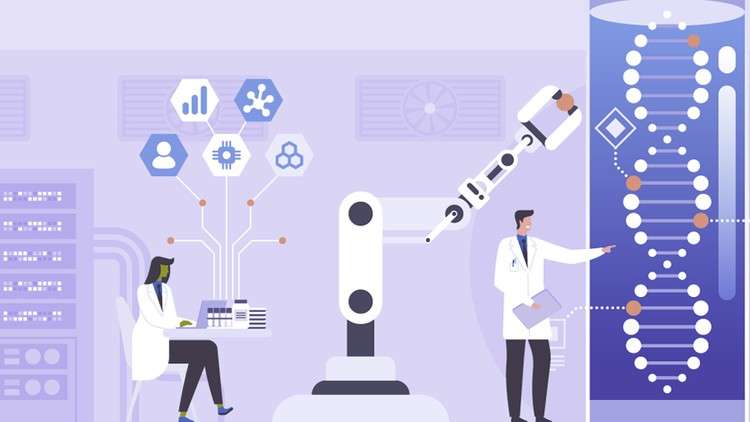
Complete Beginner’s Guide of Top DNA or Nucleic Acid Databases used in Bioinformatics along with their Utilization
What you will learn
You will learn 30+ Nucleic Acids Different Databases used in Bioinformatics
You will learn the Whole Concept of Databases
You will learn about the Primary Databases in Bioinformatics
You will learn about the Secondary Databases in Bioinformatics
You will learn about the Nucleic Acids Databases in Bioinformatics
Complete up-to Date Beginner’s Guide of top Nucleic Acids Used in Bioinformatics along with their utilization
Tools Used in Nucleic Acids Databases
Description
This Bioinformatics course is going to game changer for you. Currently, there is an explosion of biological data. Bioinformatics is at the intersection of biology and computer science.
What is Bioinformatics ?
In biology, bioinformatics is defined as, “the use of computer to store, retrieve, analyze or predict the composition or structure of bio-molecules” . Bioinformatics is the application of computational techniques and information technology to the organization and management of biological data. Classical bioinformatics deals primarily with sequence analysis.
Aims of Bioinformatics
- Development of database containing all biological information.
- Development of better tools for data designing, annotation and mining.
- Design and development of drugs by using simulation software.
- Design and development of software tools for protein structure prediction function, annotation and docking analysis.
- Creation and development of software to improve tools for analyzing sequences for their function and similarity with other sequences
Biological Databases
Biological data are complex, exception-ridden, vast, and incomplete. Therefore several databases have been created and interpreted to ensure unambiguous results. A collection of biological data arranged in a computer-readable form that enhances the speed of search and retrieval and convenient to use is called a biological database. A good database must have updated information.
Importance of Biological Database
A range of information like biological sequences, structures, binding sites, metabolic interactions, molecular action, functional relationships, protein families, motifs and homologous can be retrieved by using biological databases. The main purpose of a biological database is to store and manage biological data and information in computer readable forms.
In this course we learned about the different biological databases that are being used in bioinformatics and get to know a little bit about their details. Mainly these databases are divided into four categories and we learned about them base by base. And explained the difference among the primary and secondary database and explained their utilization in bioinformatics.
Nucleic Acid Database
The Nucleic Acid Database is a relational database containing information about three-dimensional nucleic acid structures. The methods used for data processing, structure validation, database management and information retrieval, as well as the various services available via the World Wide Web, are described.
DNA databases
They are generally used for forensic purposes which includes searching and matching of DNA profiles of potential criminal suspects. In 2009 Interpol reported there were 54 police national DNA databases in the world at the time and 26 more countries planned to start one.
Genome databases
The highly efficient, fast and productive technologies of genomic studies enable the collection of overwhelming amounts of data. The primary genomic data types are DNA and protein sequences, genetic mapping data and data resulting from functional analysis.
Genomic databases allow for the storing, sharing and comparison of data across research studies, across data types, across individuals and across organisms.
Phenotype databases
Phenotypic data are all kinds of clinical information regarding patients’ disease symptoms, as well as relevant demographic data, such as age, ethnicity and sex. This type of information is collected and stored by patient registries and biobanks.
RNA databases
It can be used in genome wide screens to detect functional RNA structures, as found in noncoding RNAs and cis-acting regulatory elements of mRNAs.
This course will be extremely helpful to students of data analyst and bioinformaticians because they use the databases a lot in their work.
If you guys have any questions or suggestions please let me know in instructor inbox I’ll try to answer all of your questions within 12 hours.
Content